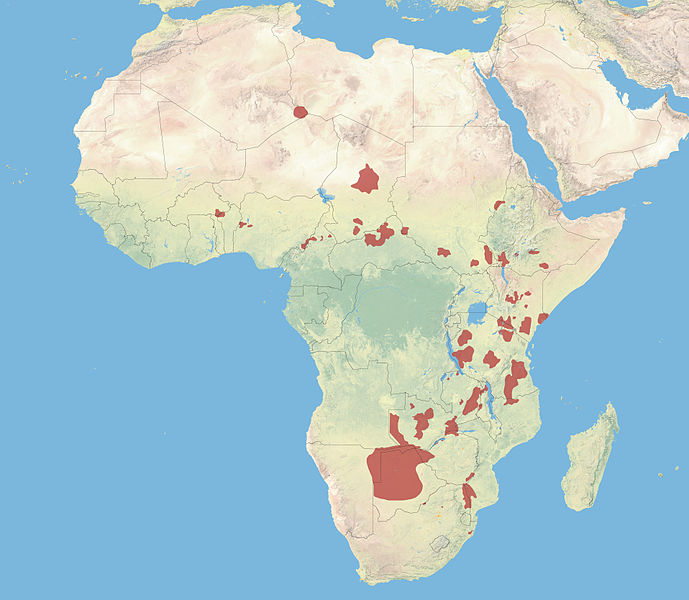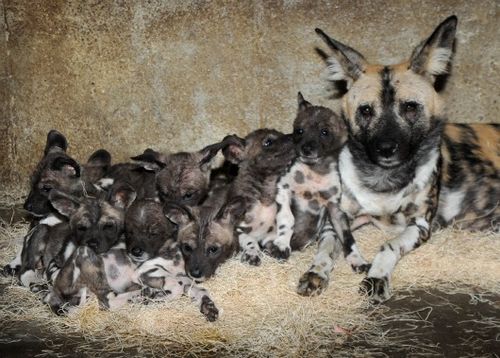Wild dogs were once widely distributed throughout sub-Saharan Africa. Today, viable populations may exist in only a handful of countries. Habitat loss and human persecution are the main causes of decline. Wild dogs fall victim to snaring, shooting, and speeding vehicles on roadways. This graphic picture is of a yearling female that died in a snare set by a poacher for antelope. Disease such as
rabies and distemper may also threaten some wild dog population.
- Between 2,000 and 5,000 of these dogs remain in the wild, mostly in game preserves or national parks.
- African wild dogs are found mostly in arid zones and in the savanna. They can also be found in woodland and mountainous habitats where their prey lives.
It is variously called the African wild dog, African hunting dog, Cape hunting ... Among African wild dogs, females compete for access to males that will help rear their .... in to nurse nine African wild dog pups, after the pups' mother had died.
African wild dogs live in close-knit, nomadic packs. WCS is working ... The group consists of fewer than 15 related males, several adult females, and their pups. Two to twenty puppies are born, but the litter size is usually about 10 puppies.
African Wild Dogs have a very small amount of success rate in Africa.
 Mostly because their isn't as many African wild dogs left in Africa. Theirs to many small of packs to take down the larger animals in Africa your gonna need a bigger pack that can hunt for their pups.
Mostly because their isn't as many African wild dogs left in Africa. Theirs to many small of packs to take down the larger animals in Africa your gonna need a bigger pack that can hunt for their pups. The hunting members of the pack return to the den where they regurgitate meat for the nursing female and pups. Although litters are very large, very few pups survive. Sometimes the dens are flooded, or the pups die from exposure or disease. When pack numbers are reduced, hunting is not as efficient and adults may not bring back sufficient food for the pups. The entire pack is involved in the welfare of the pups; both males and females babysit the young and provide food for them.
Some scientists say that the African wild dog has a deep connection with the lion.
They're a family group. Mom, dad, and older siblings take care of the pups. They even have babysitters at the den. Pups get to eat first, unlike other group-living carnivores. This is a strong bread of dogs and they gonna stay together till the end.
- The Wild Dog is South Africa’s most endangered large carnivore.
- The total Wild Dog population in Africa is only between 3000 – 5000 individuals.
- Wild Dogs are considered to be extinct in 23 countries in Africa.
- Wild Dogs are particularly susceptible to snares and road kills.
- In natural areas the lion is the Wild Dog’s main enemy and competitor.
- A Wild Dog uses up twice as much energy as a working Border Collie
No matter how big you are if theirs enough dogs in the pack they are gonna hut you and take you down.







No comments:
Post a Comment